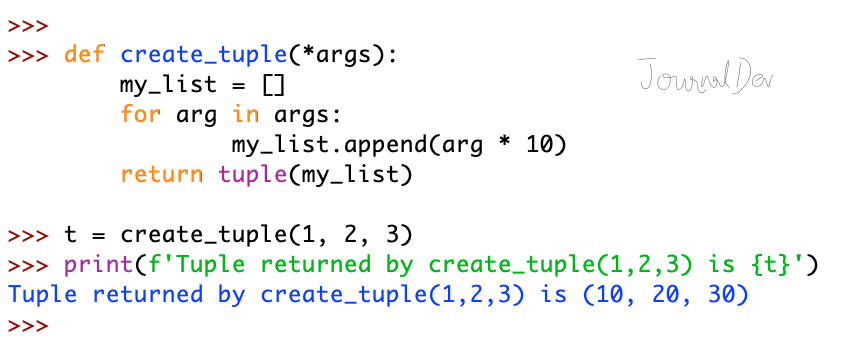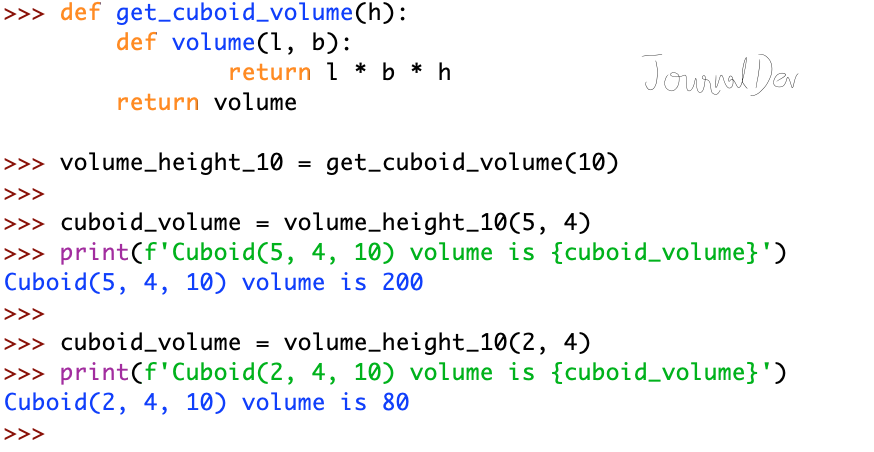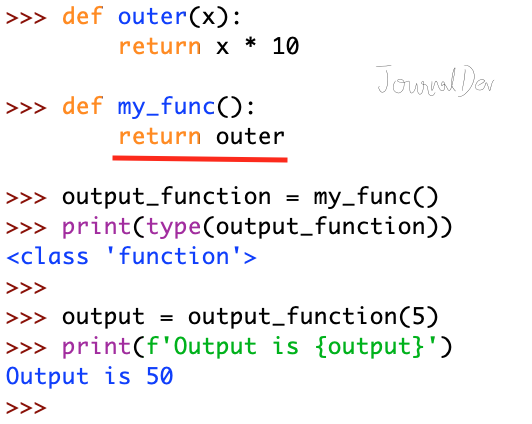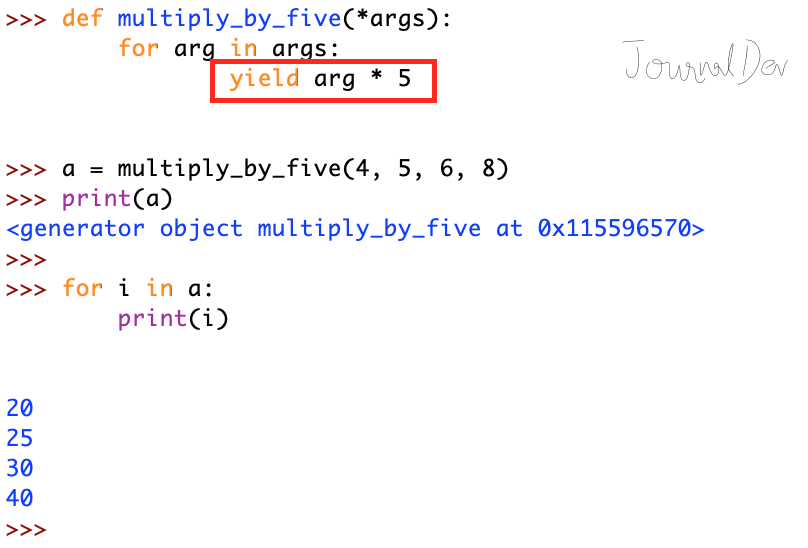Pythonのreturn文は、関数から値を返すために使用されます。return文は関数内でのみ使用でき、Pythonの関数の外では使用できません。
return文がないPythonの関数
Pythonのすべての関数は何かを返します。関数にreturn文がない場合、Noneが返されます。
def print_something(s):
print('Printing::', s)
output = print_something('Hi')
print(f'A function without return statement returns {output}')
出力:

Pythonのreturn文の例
関数内で操作を行い、結果を呼び出し元に返すことができます。
def add(x, y):
result = x + y
return result
output = add(5, 4)
print(f'Output of add(5, 4) function is {output}')
出力:

式を含むPythonのreturn文
return文では式も使用できます。その場合、式が評価され、結果が返されます。
def add(x, y):
return x + y
output = add(5, 4)
print(f'Output of add(5, 4) function is {output}')
出力:

Pythonのブール値を返す
関数の引数のブール値を返す例を見てみましょう。オブジェクトのブール値を取得するためにbool()関数を使用します。
def bool_value(x):
return bool(x)
print(f'Boolean value returned by bool_value(False) is {bool_value(False)}')
print(f'Boolean value returned by bool_value(True) is {bool_value(True)}')
print(f'Boolean value returned by bool_value("Python") is {bool_value("Python")}')
出力:

Pythonの文字列を返す
引数の文字列表現を返す関数の例を見てみましょう。オブジェクトの文字列表現を取得するにはstr()関数を使用できます。
def str_value(s):
return str(s)
print(f'String value returned by str_value(False) is {str_value(False)}')
print(f'String value returned by str_value(True) is {str_value(True)}')
print(f'String value returned by str_value(10) is {str_value(10)}')
出力:

Pythonのタプルを返す
時々、複数の変数をタプルに変換したいと思うことがあります。可変個の引数からタプルを返す関数の書き方を見てみましょう。
def create_tuple(*args):
my_list = []
for arg in args:
my_list.append(arg * 10)
return tuple(my_list)
t = create_tuple(1, 2, 3)
print(f'Tuple returned by create_tuple(1,2,3) is {t}')
出力:

さらなる読み物: Python *args と **kwargs
Python 関数が別の関数を返す
return 文から関数を返すこともできます。これは、複数の引数を取る関数の評価を、各々単一の引数を持つ関数のシーケンスを評価するように変換する技術であるカリー化に類似しています。
def get_cuboid_volume(h):
def volume(l, b):
return l * b * h
return volume
volume_height_10 = get_cuboid_volume(10)
cuboid_volume = volume_height_10(5, 4)
print(f'Cuboid(5, 4, 10) volume is {cuboid_volume}')
cuboid_volume = volume_height_10(2, 4)
print(f'Cuboid(2, 4, 10) volume is {cuboid_volume}')
出力:

Python 関数が外部関数を返す
return 文で定義された関数を返すこともできます。
def outer(x):
return x * 10
def my_func():
return outer
output_function = my_func()
print(type(output_function))
output = output_function(5)
print(f'Output is {output}')
出力:

Python 複数の値を返す
もし関数から複数の値を返したい場合、必要に応じてタプル、リスト、または辞書オブジェクトを返すことができます。ただし、大量の値を返す必要がある場合、シーケンスを使用するとリソースを多く消費します。その場合、yieldを使用して複数の値を一つずつ返すことができます。
def multiply_by_five(*args):
for arg in args:
yield arg * 5
a = multiply_by_five(4, 5, 6, 8)
print(a)
# 値を表示する
for i in a:
print(i)
出力:

要約
Pythonのreturn文は、関数から出力を返すために使用されます。関数から関数を返すこともできることを学びました。また、式は評価され、その結果が関数から返されます。
詳細なPythonスクリプトや他のPythonの例は、GitHubリポジトリから確認できます。
Source:
https://www.digitalocean.com/community/tutorials/python-return-statement













